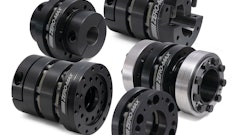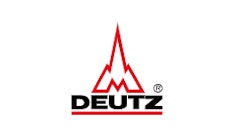Farmers and other workers often spend hours at a time driving in their tractors, so physical comfort is a priority. Because the front axles of tractors are subject to highly variable loads, the hydropneumatic systems used in suspension systems are adjusted to fixed spring rate characteristics. Now, Freudenberg-NOK Sealing Technologies (Freudenberg-NOK) is testing a new system that the driver can use to configure the suspension on an individual basis. The new system promises greater comfort and flexibility at the push of a button.
Modern tractors must perform on roads as well as in fields, since the forces that act on the front axle are low when the tractor pulls attached equipment over a field and increase significantly when traveling on a road with a trailer. If the tractor is transporting a bale of hay using a front loader, the front axle is subjected to a very high load. In such cases, the forces can range from 2,000 to 100,000 newtons, which correspond to a weight of up to 10 tons.
This places high demands on the front axle's suspension, which is for the most part is executed with hydropneumatic systems in which hydraulic accumulators – and not conventional mechanical springs and dampers – are employed. In the process, the gas-side pressure in the hydraulic accumulator plays a central role in determining the suspension system's rigidity.
Freudenberg-NOK is continually advancing the development of suspension systems that ideally compensate for the tractor's various operating conditions and offer the driver the best possible comfort. The company's engineers are testing a new system in which the driver can configure the desired rigidity using an adjustment in the cockpit.
Earlier hydropneumatic systems are able to balance load changes automatically but they are set to a fixed spring rate, or can only handle two different levels of rigidity at most. With the third generation of Freudenberg-NOK's new suspension system, it is possible to freely adjust the suspension. This not only equals greater comfort due to less vibration and noise but also increases productivity in the interaction of the tractor and its attached equipment. As a result, the ideal spring-damper adjustment increases the speed with which a field can be worked.
In a further stage of development, the system can even set the spring rate automatically. A sensor unit continually measures the pressure on the cylinder, and the control unit accordingly adjusts the suspension of the chassis adaptively.
The hydropneumatic suspension is based on the principle of pressure and counterpressure. In this approach, the pressure produced by the excitation of the vehicle is balanced with a hydraulic counterpressure. The front wheels of the tractor are connected to a spring-loaded ball via the pistons of a hydraulic cylinder which serves as a hydraulic accumulator. This spring-loaded ball is filled with hydrogen under high pressure; a membrane separates the gas from the hydraulic fluid.
Freudenberg-NOK's new system has the capacity to adaptively control the hydraulic counterpressure in line with the tractor's load. In the process, a valve block communicates with the vehicle electronic system and adjusts the counterpressure with the help of pressure control valves. The counterpressure builds up by means of the hydraulic fluid in the annular space between the cylinder wall and the piston.
Specialists from Freudenberg-NOK work closely with tractor manufacturers on the application of suspension systems to various vehicle concepts and provide the best possible suspension for each area of application. This includes the design and simulation of the system, prototype construction, technical trials and testing, and the application of prototypes to customer systems. To achieve the best possible driving comfort, the services of Freudenberg-NOK engineers are rounded out with test drives and development work up to production.

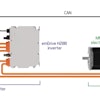

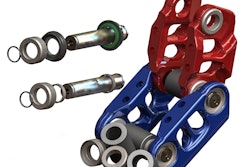
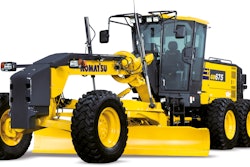
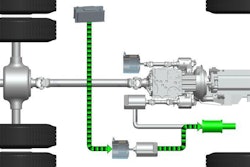







![Sa P75 I Sahr[80]](https://img.oemoffhighway.com/mindful/acbm/workspaces/default/uploads/2025/10/sa-p75-isahr80.Cn3n79HB4H.jpg?ar=16%3A9&auto=format%2Ccompress&fit=crop&h=135&q=70&w=240)


